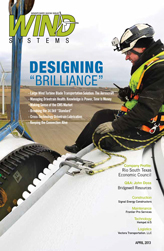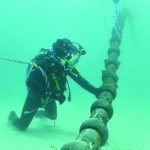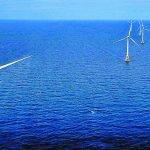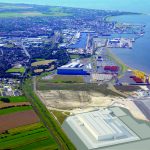Successful wind projects don’t just happen. They result from the efforts of a large number of talented people over several years. However, the overall success of a wind project can be threatened if successful project development is not followed by successful design and construction. A successful wind construction project can be described as follows: Everyone goes home from the project site safely every day, and the construction allows the project to realize its owners’ economic expectations. What are the key attributes of a successful wind construction project? Let’s explore a few.
Safety
Successful wind projects have great safety records and employ systems that ensure that every person that works on the project goes home safely each day. Wind projects can be dangerous and people can be seriously injured or killed if care is not taken to protect them. A wind contractor’s devotion to safety must do more than make the contractor the “safety police.” Wind projects constructed by companies with a corporate culture centered on safety and a true concern for the well-being of their workers operate more safely, more efficiently, and have fewer issues in the interfaces between trades. The key is incorporating safety into every aspect of the project, from the initial planning to completion. Projects where workers from all trades are acquainted with each other and have a concern for one another’s safety have great safety records, higher efficiency and quality, and great communication between all parties.
The Right Design
Successful wind projects have system designs that match the economic expectations of the owner. Project success begins with the right project design. Minimalist designs have lower construction costs, but higher than normal maintenance costs and shorter lifespans. Designs that are too robust have lower maintenance costs, but higher than necessary upfront costs. The overall project design should be completed by contractors and engineers that understand the technical aspects of the design, but also understand the installed cost of each system and the overall project economics. Within its economic constraints, a wind project should be designed so that it has the best chance of meeting or exceeding its power output goals for its intended life. The cost of each designed system (civil, structural, and electrical) must fit within the overall economics of the project over its expected life. Each system’s design should balance upfront costs with impacts on power production over the plant’s lifespan. Contractors and engineers that are active in the wind industry have developed highly effective design criteria for each major system. However, it is not uncommon to see projects built with technically sound designs that unnecessarily add millions of dollars to the overall construction costs. In addition, it is not uncommon to see wind projects with critical failures in design areas resulting from inadequate designs. The best insurance against this happening on a wind project is to engage an experienced wind contractor early in the design process to provide, or guide, the project design.
The Right Team
Successful wind construction projects are built by experienced and knowledgeable teams. Wind design and construction projects are fast-paced and demand quick action. When everything comes together to give a project a green light (interconnection approval, turbine supply agreement, permitting, financing), design and construction must move fast. Missing completion dates can cost the owner millions of dollars. An experienced design and construction team is accustomed to this fast pace and will provide a high quality design/build the product in a relatively short time frame. Experienced wind contractors assemble the team of engineers and trades that have the necessary depth of wind construction experience under a wide variety of circumstances. Additionally, successful wind construction teams have the depth of resources to pull from when issues threaten the completion of a project, particularly in the critical choke points of turbine erection and substation construction.
Open Communication
Successful wind projects have open, consistent, and effective communications. While no one involved in a project expects its design and construction to be without difficulties, they rightly expect that difficulties will be thoroughly discussed at the appropriate levels, that solutions will be developed in an open manner, and that these solutions will be effectively executed by the contractor. Establishing communications processes and expectations early in a project pays off greatly when unexpected difficulties arise. It’s easy to have open communications when everything is going smoothly. It’s much harder when issues arise that demand quick responses with input from a number of affected parties. Success hinges on having an effective and functioning communications structure in place when critical issues arise.
When a project design/construction team is assembled, owners will benefit from taking the time to ask their contractors and engineers how their design and construction strategy will make the project a success.

































